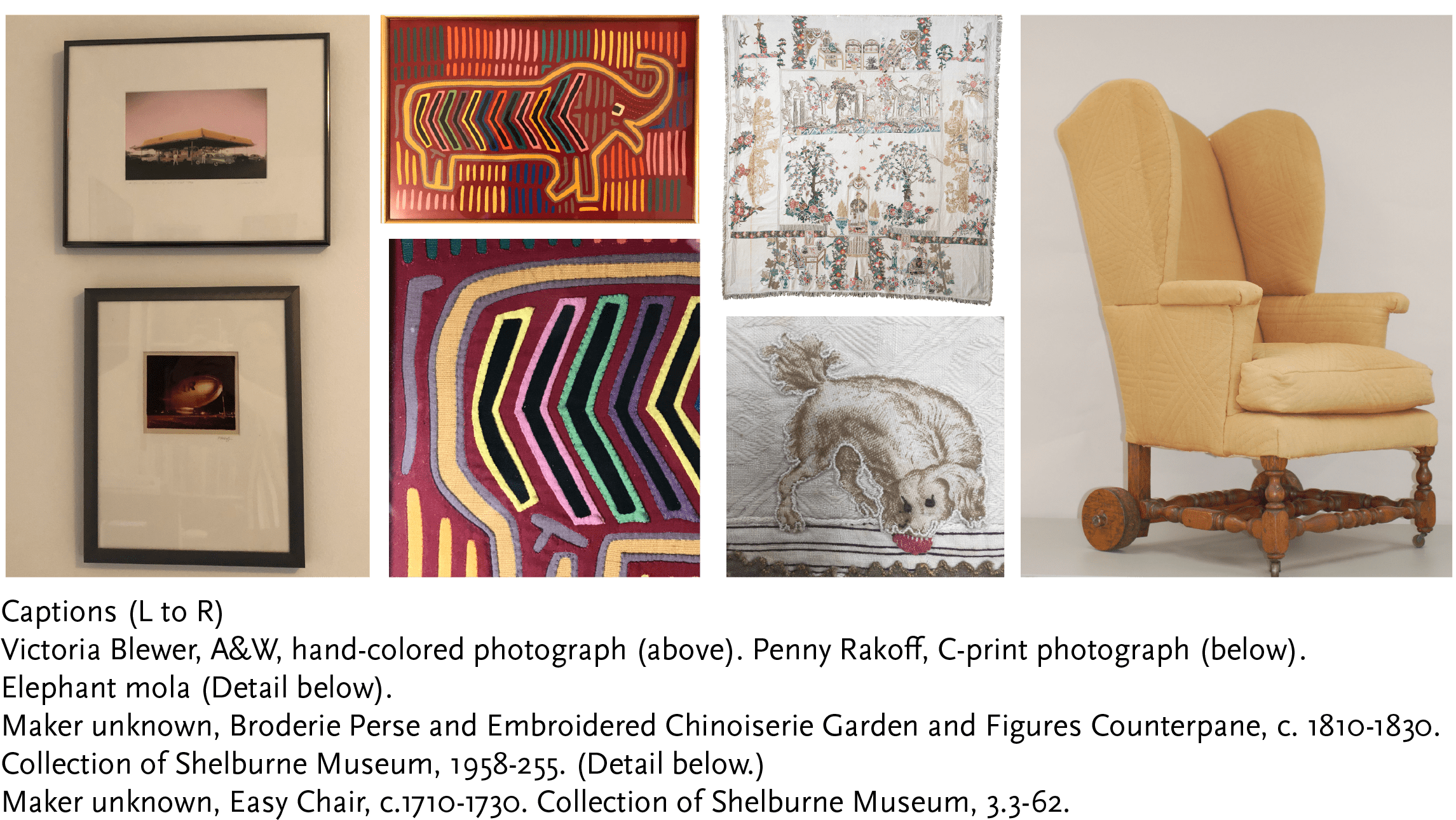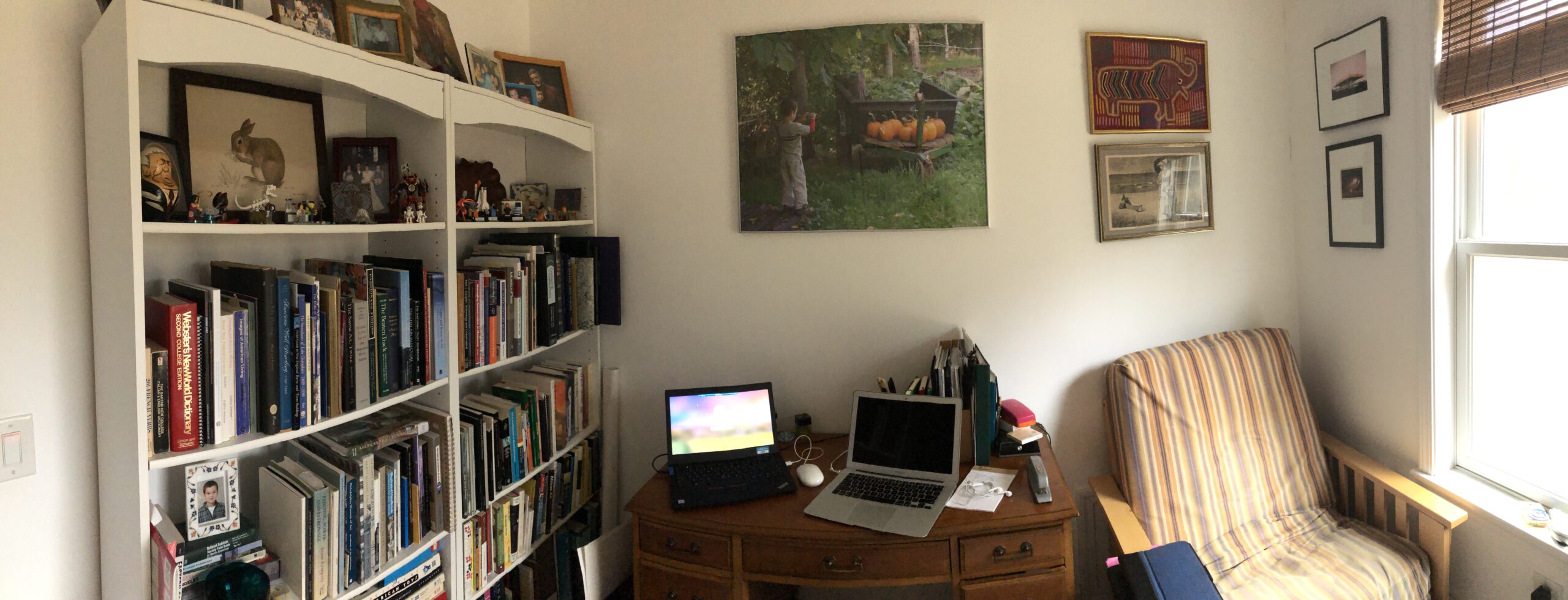
Author: Nancie Ravenel
My home office is small, but it might be where I spend most of my waking hours at home. I have hung the walls with works of art that hold special significance to me. They hold such wonderful memories. My husband took the photo of our son in our neighbor’s yard about 12 years ago, after my mother gave him her old point-and-shoot digital camera. I love how focused my son looks, the lush green leaves, and vibrant orange pumpkins.
The other works I can see from my desk are either gifts from friends and family members or purchases from artists whose work I admire a lot. I would bet that most folks who have driven through Middlebury, Vermont, on Route 7 would recognize the A&W drive-in restaurant in Victoria Blewer’s hand-colored photo. Hanging below is Penny Rakoff’s photograph taken at the Goodyear blimp-port near Akron, Ohio. The artists manipulate light and color in their pictures in different ways. Their subject matter shares their love of their respective places and communities. Both the Middlebury A&W and the Goodyear airship base are in operation, but, in the pictures, they look historical, and, perhaps, mythic.
The mola depicting an elephant hanging over the comfortable chair came from my grandmother’s house. She was elegant. She loved color and fashion and she loved to entertain. While the elephant isn’t especially elegant, it’s cheery countenance makes me smile. Molas are made of layers of woven cotton stitched together mostly in reverse appliqué. The background stripes lie under the red and gray fabrics that comprise the elephant’s body. The textiles that make up the stripes on the elephant’s torso are stitched on top of the red fabric, in a standard appliqué technique.
Within Shelburne Museum’s collection of bedcovers, there are many examples of appliqué. Perhaps my all-time favorite is a counterpane with a appliqué and embroidered Chinoiserie garden with figures, made c. 1810-1830 of printed English cottons, possibly in the tidewater area of Virginia. The stitching that holds the pieces to the background fabric is so elegant, and the placement of the printed pieces is whimsical, yet balanced.
And while I have a perfectly good desk chair, most of my reading and writing is done in the comfortable chair. I’m sitting in it as I write this. Did you know that Shelburne Museum has one of the oldest easy chairs produced in the US? Museum founder Electra Havemeyer Webb purchased the chair in the 1920s at Au Quatiriéme, an antiques store located on the fourth floor of Wanamaker’s department store in New York. The chair once sat in the rear parlor at the Brick House, covered in a floral chintz slipcover. However, after opening Shelburne Museum, she had it reupholstered in an early nineteenth-century wool whole cloth quilt, in a then-popular Colonial Revival trend. Some historians would like Shelburne Museum to reupholster the chair in an eighteenth-century style based on evidence found on the chair’s frame. But because so few examples of Colonial Revival upholstery remain in public collections, the Museum’s curators have decided that the chair should retain the present profile and quilted cover. If you want to learn more about these eighteenth-century easy chairs, check out Robert Trent’s article over on the Chipstone Foundation’s website.
While it might seem odd that the things that bring me comfort at home have echos at work, it is one of the reasons I love working with Shelburne Museum’s collection. It seems like there’s always something in the collection that relates to something in my own life.

Nancie Ravenel
Objects Conservator
Shelburne Museum

